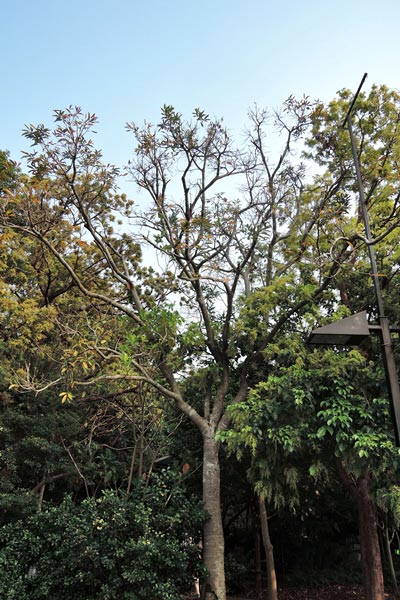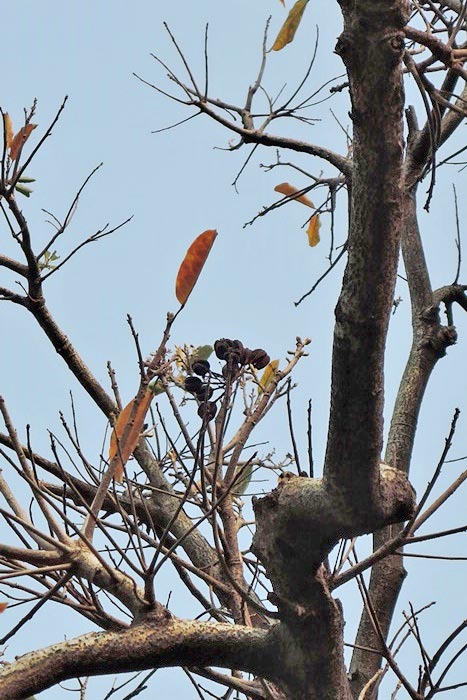Reevesia formosana
The Formosan reevesia is endemic to Taiwan, and is found in the wild in low altitude mountainous areas of Taichung, Nantou, and Pingtung at the altitude of 100 to 700 meters, where it is not abundant. Although rare in the wild, in recent years, the Formosan reevesia has been cultivated in large numbers because of its beautiful shape, and now can be found in many parks and green spaces. In addition to the Botanical Garden, the museum has also planted the trees around the trails behind the Science Center and on the sidewalk of Xitun Road as landscape trees.
The fruit of the Formosan reevesia is shaped like a small lantern, or like a melon hammerhead used in ancient ceremonies. The special shape of the fruit has made it widely used by many Taiwanese seed creators in their creations, and the most common application is to stick it together with other fruits on a seed wreath. However, the overly ripe fruits cannot be used in this utilization as the fruit of the Formosan reevesia will split when fully ripe and cannot retain its whole shape. When the fruit splits, the winged seeds can ride on the wind to find a new home. The split segments of the fruit resemble the claws of animals, and some people use them as animal paws in their creations.
The Formosan reevesia is a medium-sized deciduous tree with rapid leaf change, mainly in the spring of each year. When most plants start to sprout in spring, the old leaves of the Formosan reevesia turn yellow and defoliate in just a few days, while the new shoots sprout at the same time. Often, the new leaves grow into a green shade within a short period of time after all the old leaves fall.
The Taiwanese name “White Tree” comes from the white bark of the Formosan reevesia.

